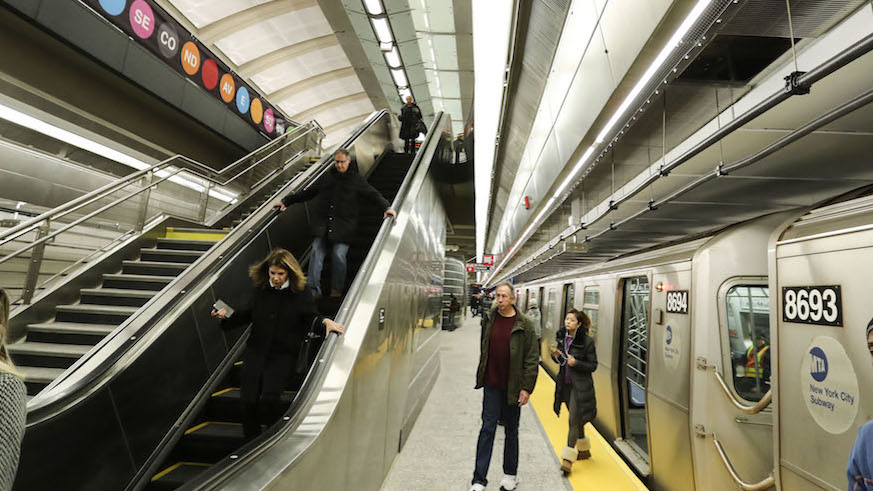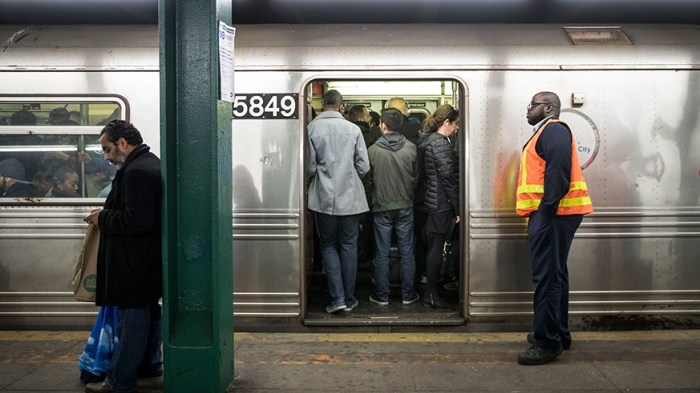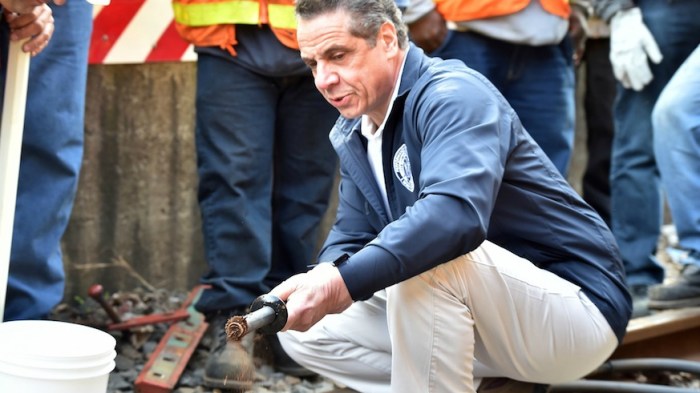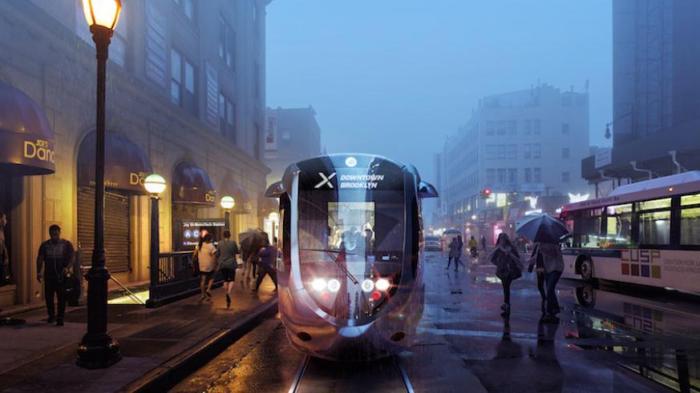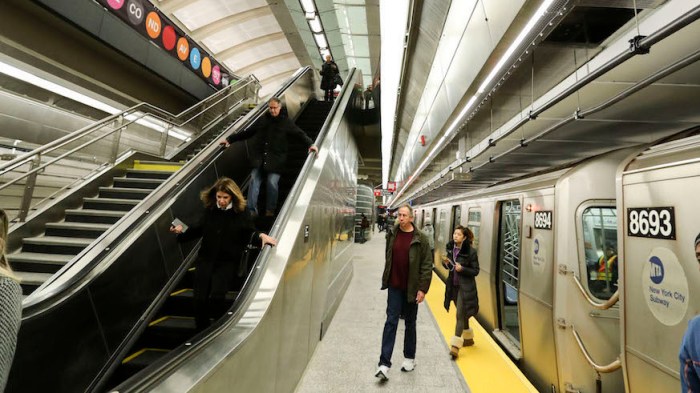Out of all 472 New York City subway stations, 114 are currently accessible, according to the MTA, but a new report from Manhattan Borough President Gale Brewer’s office says that already-small number is actually inflated.
In January, Malaysia Goodson died after falling down subway station stairs while carrying a stroller, highlighting the MTA’s lack of accessibility. Authorities said later that her death was related to a pre-existing condition, but still, advocates have called out the transit authority for its lack of elevators and other accessibility options for years.
While the MTA says 114 New York City subway stations provide accessibility options, Brewer’s office disagrees.
For the report, borough president staff surveyed 42 Manhattan subway stations, all those in the borough that have been deemed “accessible” by the MTA, and found a lack of signage, out-of-service and unclean elevators, a lack of accessibility options for the visually impaired and that several stations provide accessible travel in only one direction.
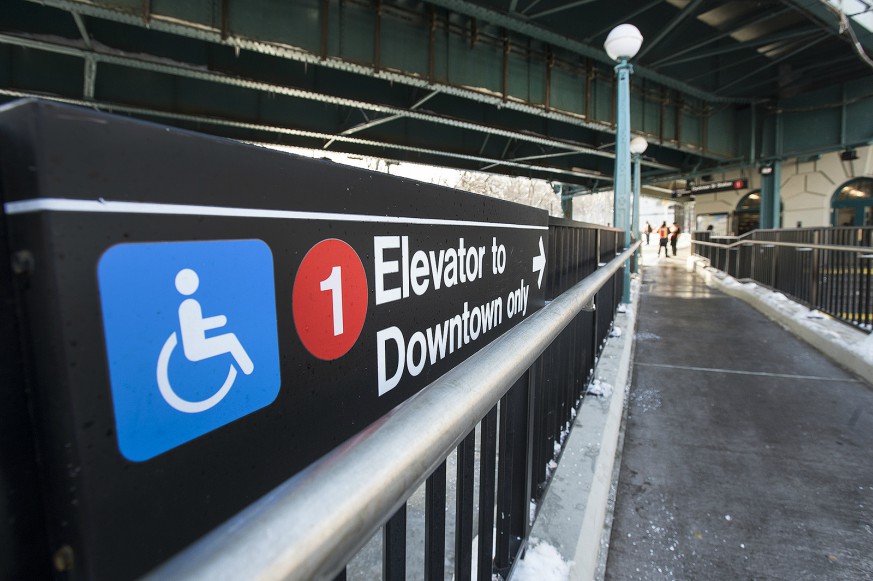
“Intentionally or otherwise, the MTA’s assertion that they currently operate 114 accessible stations, an already-low number, has itself been inflated as some stations that are not fully accessible are listed as accessible on the MTA’s website,” the report reads,
Among the New York City subway stations with accessibility in only one direction are the Dyckman Street 1 train station, 49th Street NQRW and the 50th Street CE train station.
“Ruling out stations that provide accessibility in only one direction, as well as stations that do not provide accessible transfers between other lines, would reveal a true percentage of accessible stations that is substantially lower than 24 percent,” per the report.
Accessible NYC subway stations unclean, unclear: report
Along with only partial accessible travel, these “accessible” New York City subway stations have other issues, according to Brewer’s office. After visiting the 42 stations on four separate days at different times of the day, her staff found that 54 percent of the elevators surveyed were “visually unclean” and 53.5 percent had “odor problems.”
Surveyors commented on pools of liquid (appearing to be urine or vomit, most often), gum on the floor, litter and poor ventilation that compounded heat and odors.
These stations also lacked clear signage to help straphangers find the elevators, per the report, with 37.3 percent of stations in need of more or better signs to direct riders to accessible boarding areas and 81 percent of elevators lacking alternative travel information.
When Brewer’s surveyors visited these New York City subway stations over four days, they found on average that 5.2 percent of elevators were inoperable, with 28 total elevators unavailable. On one day particular, 10 elevators, or 7.5 percent, were out of service.
More than 5 percent of the elevators were also missing raised braille, and about 17 percent of these subway stations lacked properly maintained “stair nosings,” the bright paint that marks the top and bottom of a staircase, for those who are visually impaired.
Among the other accessibility issues were platform-connecting ramps that were only wide enough for one wheelchair at a time, “so if two riders enter the ramp from different sides and meet in the middle, one has to double back to the start of the ramp,” vacant station booths near accessible entry gates and confusing “Elevator Closed” signs that light up when the elevator is actually closed, but otherwise are still readable and complicate travel.
The report included a slew of recommendations for the MTA, including the need for a set timeframe to reach 100 percent accessibility in all New York City subway stations and uniform standards for what station features are needed to become ADA compliant.
Improved accessibility is part of New York City Transit President Andy Byford’s Fast Forward Plan, including the creation of more than 50 new accessible stations within five years, so all riders are “no more than two stops” from an accessible station, and the goal to achieve “maximum possible accessibility in 15 years.”
“These goals sound commendable, but after decades of unanswered pleas from disabled riders and advocates, New Yorkers are understandably skeptical about the MTA following through now,” the report from Brewer’s office reads.
The MTA did not respond to a request for comment about the report.

